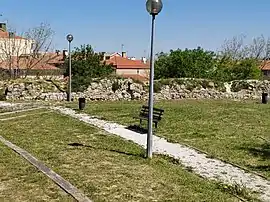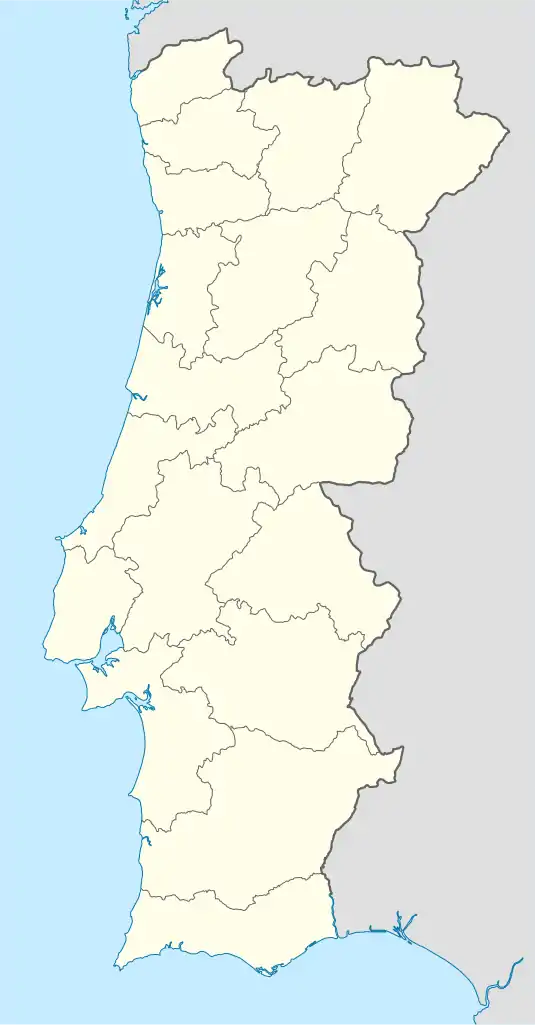Forte da Casa
Forte da Casa is a town and former civil parish in the municipality of Vila Franca de Xira, Portugal. Since 2013, it is part of the civil parish Póvoa de Santa Iria e Forte da Casa. Its population in 2011 was 11,056[1] in an area of 3.96 km².[2]
Forte da Casa | |
|---|---|
 Ruins of the Fort of Casa, in Forte da Casa | |
 Forte da Casa Location in Portugal | |
| Coordinates: 38.872°N 9.058°W | |
| Country | |
| Region | Lisboa |
| District | Lisbon |
| Municipality | Vila Franca de Xira |
| Disbanded | 2013 |
| Population (2011) | |
| • Total | 11,056 |
| Time zone | UTC±00:00 (WET) |
| • Summer (DST) | UTC+01:00 (WEST) |
History
The town of Forte da Casa takes its name from the Fort of Casa, a fortification that was part of the second line of the Lines of Torres Vedras, built between 1809 and 1810 to defend Lisbon against the French troops during the Peninsular War.[2][3] The ruins of the fortification can be seen today in a small urban park inside the town.
Prior to 1985, Forte da Casa belonged to the civil parish of Vialonga. After a sharp population increase in the 1970's and 1980's, the civil of parish of Forte da Casa was created on 12 July 1985. After a major territorial administration reorganization in Portugal in 2013, the civil parish of Forte da Casa was merged with the neighboring civil parish of Póvoa de Santa Iria.[4]
In November 2014, Forte da Casa was one of the locations most affected by a Legionella outbreak in the Vila Franca de Xira municipality.[5]
References
- "Statistics Portugal - Web Portal". www.ine.pt. Retrieved 2021-03-14.
- "Forte da Casa". Junta de Freguesia da Póvoa de Santa Iria e Forte da Casa (in European Portuguese). Retrieved 2021-03-14.
- ROTEIRO Nº4 - AS ROTAS HISTÓRICAS DAS LINHAS DE TORRES (PDF), Museu Municipal Vila Franca de Xira (in Portuguese). Retrieved 2021-03-14.
- "União das freguesias da Póvoa de Santa Iria e o Forte da Casa". Junta de Freguesia da Póvoa de Santa Iria e Forte da Casa (in European Portuguese). Retrieved 2021-03-14.
- "Quatro anos depois do surto, processo da 'legionella' sem data para a instrução". www.dn.pt (in Portuguese). Retrieved 2021-03-14.
External links
- Junta de Freguesia Póvoa de Santa Iria e Forte da Casa (in Portuguese)